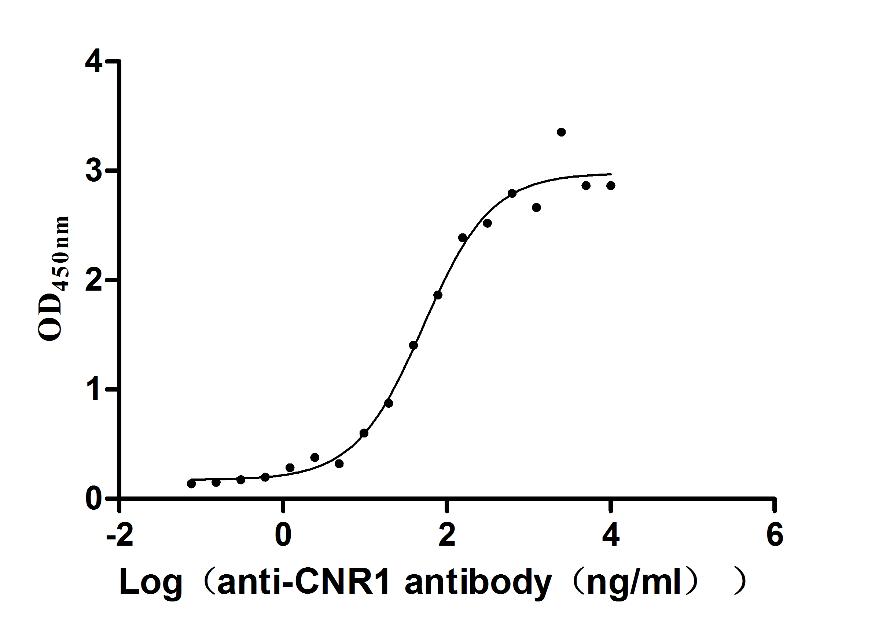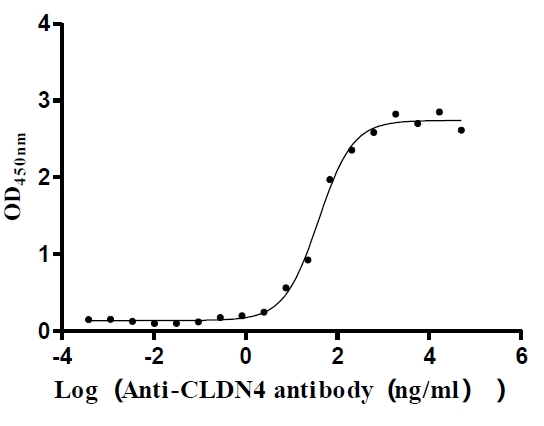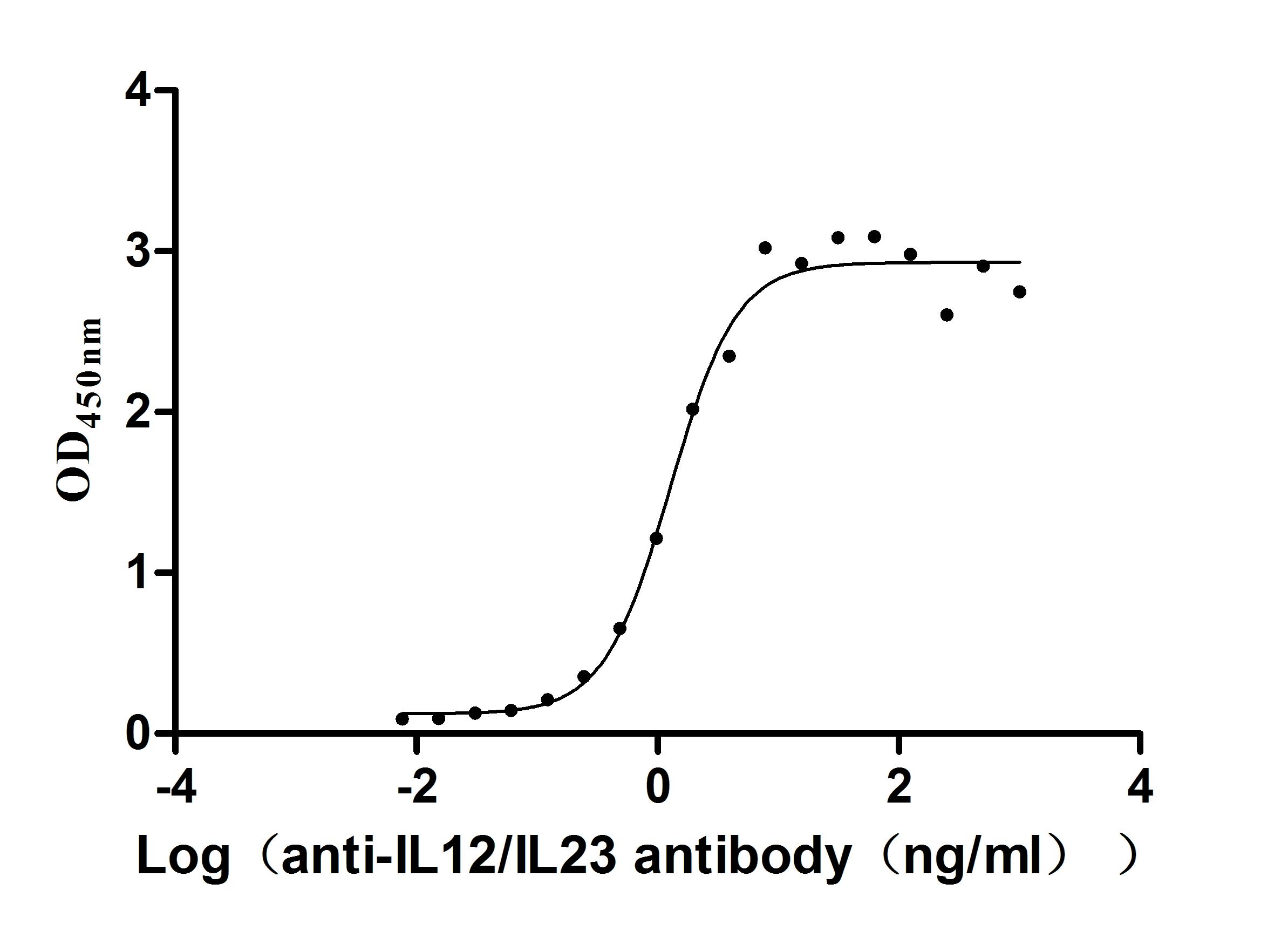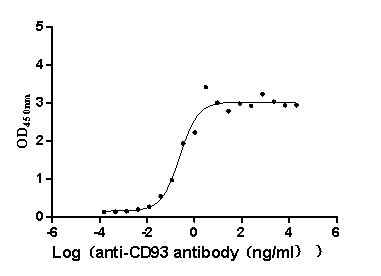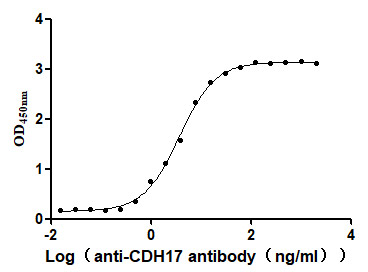Recombinant Human Pre-mRNA 3'-end-processing factor FIP1 (FIP1L1)
-
中文名称:人FIP1L1重组蛋白
-
货号:CSB-YP744253HU
-
规格:
-
来源:Yeast
-
其他:
-
中文名称:人FIP1L1重组蛋白
-
货号:CSB-EP744253HU
-
规格:
-
来源:E.coli
-
其他:
-
中文名称:人FIP1L1重组蛋白
-
货号:CSB-EP744253HU-B
-
规格:
-
来源:E.coli
-
共轭:Avi-tag Biotinylated
E. coli biotin ligase (BirA) is highly specific in covalently attaching biotin to the 15 amino acid AviTag peptide. This recombinant protein was biotinylated in vivo by AviTag-BirA technology, which method is BriA catalyzes amide linkage between the biotin and the specific lysine of the AviTag.
-
其他:
-
中文名称:人FIP1L1重组蛋白
-
货号:CSB-BP744253HU
-
规格:
-
来源:Baculovirus
-
其他:
-
中文名称:人FIP1L1重组蛋白
-
货号:CSB-MP744253HU
-
规格:
-
来源:Mammalian cell
-
其他:
产品详情
-
纯度:>85% (SDS-PAGE)
-
基因名:FIP1L1
-
Uniprot No.:
-
别名:FIP1L1; FIP1; RHEPre-mRNA 3'-end-processing factor FIP1; hFip1; FIP1-like 1 protein; Factor interacting with PAP; Rearranged in hypereosinophilia
-
种属:Homo sapiens (Human)
-
蛋白长度:full length protein
-
表达区域:1-594
-
氨基酸序列MSAGEVERLV SELSGGTGGD EEEEWLYGGP WDVHVHSDLA KDLDENEVER PEEENASANP PSGIEDETAE NGVPKPKVTE TEDDSDSDSD DDEDDVHVTI GDIKTGAPQY GSYGTAPVNL NIKTGGRVYG TTGTKVKGVD LDAPGSINGV PLLEVDLDSF EDKPWRKPGA DLSDYFNYGF NEDTWKAYCE KQKRIRMGLE VIPVTSTTNK ITAEDCTMEV TPGAEIQDGR FNLFKVQQGR TGNSEKETAL PSTKAEFTSP PSLFKTGLPP SRNSTSSQSQ TSTASRKANS SVGKWQDRYG RAESPDLRRL PGAIDVIGQT ITISRVEGRR RANENSNIQV LSERSATEVD NNFSKPPPFF PPGAPPTHLP PPPFLPPPPT VSTAPPLIPP PGFPPPPGAP PPSLIPTIES GHSSGYDSRS ARAFPYGNVA FPHLPGSAPS WPSLVDTSKQ WDYYARREKD RDRERDRDRE RDRDRDRERE RTRERERERD HSPTPSVFNS DEERYRYREY AERGYERHRA SREKEERHRE RRHREKEETR HKSSRSNSRR RHESEEGDSH RRHKHKKSKR SKEGKEAGSE PAPEQESTEA TPAE
-
蛋白标签:Tag type will be determined during the manufacturing process.
The tag type will be determined during production process. If you have specified tag type, please tell us and we will develop the specified tag preferentially. -
产品提供形式:Lyophilized powder
Note: We will preferentially ship the format that we have in stock, however, if you have any special requirement for the format, please remark your requirement when placing the order, we will prepare according to your demand. -
复溶:We recommend that this vial be briefly centrifuged prior to opening to bring the contents to the bottom. Please reconstitute protein in deionized sterile water to a concentration of 0.1-1.0 mg/mL.We recommend to add 5-50% of glycerol (final concentration) and aliquot for long-term storage at -20℃/-80℃. Our default final concentration of glycerol is 50%. Customers could use it as reference.
-
储存条件:Store at -20°C/-80°C upon receipt, aliquoting is necessary for mutiple use. Avoid repeated freeze-thaw cycles.
-
保质期:The shelf life is related to many factors, storage state, buffer ingredients, storage temperature and the stability of the protein itself.
Generally, the shelf life of liquid form is 6 months at -20°C/-80°C. The shelf life of lyophilized form is 12 months at -20°C/-80°C. -
货期:Delivery time may differ from different purchasing way or location, please kindly consult your local distributors for specific delivery time.Note: All of our proteins are default shipped with normal blue ice packs, if you request to ship with dry ice, please communicate with us in advance and extra fees will be charged.
-
注意事项:Repeated freezing and thawing is not recommended. Store working aliquots at 4°C for up to one week.
-
Datasheet :Please contact us to get it.
靶点详情
-
功能:Component of the cleavage and polyadenylation specificity factor (CPSF) complex that plays a key role in pre-mRNA 3'-end formation, recognizing the AAUAAA signal sequence and interacting with poly(A) polymerase and other factors to bring about cleavage and poly(A) addition. FIP1L1 contributes to poly(A) site recognition and stimulates poly(A) addition. Binds to U-rich RNA sequence elements surrounding the poly(A) site. May act to tether poly(A) polymerase to the CPSF complex.
-
基因功能参考文献:
- Case Report: concurrent development of myeloproliferative hypereosinophilic syndrome and lymphomatoid papulosis associated with FIP1L1-PDGFRA gene fusion. PMID: 28374041
- FIP1L1/ PDGFRA associated chronic eosinophilic leukemia has an excellent long-term prognosis following imatinib therapy. PMID: 27120808
- F604S exchange in FIP1L1-PDGFRA enhances FIP1L1-PDGFRA protein stability via SHP-2 and SRC and is associated with kinase inhibitor resistance in hypereosinophilic syndrome and chronic eosinophilic leukemia. PMID: 25761934
- FIP1L1 differentially contributes to the pathogenesis of distinct types of leukemia. PMID: 24763514
- FP fusion gene favors secondary KIT mutations in MCs via growth and proliferation signals or that a yet unknown mechanism causes genomic instability with independent evolution of FP and KIT D816V PMID: 24458279
- Oncostatin M is a FIP1L1/PDGFRA-dependent mediator of cytokine production in chronic eosinophilic leukemia. PMID: 23621172
- description of polycythemia vera concurrent with FIP1L1-PDGFRA-positive myeloproliferative neoplasm with eosinophilia [case report] PMID: 22944561
- Data show that the cyclin-dependent kinase 7/9 inhibitor (CDK7/9 inhibitor) potently inhibits FIP1L1-PDGFRalpha-positive Bcr-Abl-positive chronic myeloid leukemia (CML) cells. PMID: 22447844
- results strongly suggest that JAK2 is activated by Fip1-like1 (FIP1L1)-platelet-derived growth factor receptor alpha (F/P) and is required for F/P stimulation of cellular proliferation and infiltration in chronic eosinophilic leukemia PMID: 22523564
- Treatment with imatinib is associated with an excellent prognosis in FIP1L1-PDGFRA-positive chronic eosinophilic leukemia in first chronic phase PMID: 21818111
- FIP1L1/PDGFRA fusion gene-positive myeloproliferative disorders with eosinophilia are discussed. PMID: 21399396
- The hypereosinophilic syndrome may result from a novel fusion tyrosine kinase - FIP1L1-PDGFRalpha - that is a consequence of an interstitial chromosomal deletion. PMID: 12660384
- observations suggest that the FIP1L1-PDGFRA rearrangement occurs in an early hematopoietic progenitor and suggests that the molecular pathogenesis for a subset of SMCD patients is similar to that of HES PMID: 12842979
- results indicate that the fusion of FIP1L1 to PDGFRA occurs rarely in leukemia cell lines PMID: 14630792
- FIP1L1-PDGFRA is a relatively infrequent but treatment-relevant mutation in primary eosinophilia that is indicative of an underlying systemic mastocytosis. PMID: 15284118
- the newly identified hFip1 protein, which has been shown to enhance polyadenylation through U-rich upstream elements, interacted specifically with the HPV-16 upstream element. PMID: 15767428
- Fusion protein is detected in hypereosinophilic syndrome and chronic eosinophilic leukemia. PMID: 16502585
- FIP1L1-PDGFRalpha activation requires disruption of the juxtamembrane domain of PDGFRalpha and is FIP1L1-independent PMID: 16690743
- data and previous reports suggest that FIP1L1-PDGFRA - positive HES is a distinct clinical entity with myeloproliferative features and showing a poor response to corticosteroid treatment PMID: 17261495
- FIP1L1 and PDGFRalpha have roles in response to imatinib mesylate in chronic eosinophilic leukemia PMID: 17299092
- FIP1L1-PDGFRA-positive patients who presented with acute myeloid leukemia (AML, n=5) or lymphoblastic T-cell non-Hodgkin-lymphoma (n=2) in conjunction with AML or Eos-MPD. PMID: 17377585
- Fluorescence in situ hybridization and reverse transcriptase-polymerase chain reaction protocols were developed for an accurate del(4)(q12q12) and FIP1L1-PDGFRA fusion gene detection. PMID: 17591942
- FIP1L1-PDGFRalpha emerges as a relatively homogeneous clinicobiological entity that co-exists with other abnormalities of tyrosine kinase family genes. It reflects the disease progression and there is a good response to imatinib. PMID: 18706197
- characterized FIP1L1-PDGFRA junction sequences from 113 patients at the mRNA (n=113) and genomic DNA (n=85) levels PMID: 18987651
- studied a new FISH method to detect CHIC2 deletion, FIP1L1/PDGFRA fusion and PDGFRA translocation in patients with myeloid neoplasms associated with eosinophilia PMID: 19118897
- Describes the fusion gene Fip1-like-1-PDGFRalpha in patients with idiopathic hypereosinophilic syndrome, mostly responsive to imatinib therapy. PMID: 12660384
显示更多
收起更多
-
相关疾病:A chromosomal aberration involving FIP1L1 is found in some cases of hypereosinophilic syndrome. Interstitial chromosomal deletion del(4)(q12q12) causes the fusion of FIP1L1 and PDGFRA (FIP1L1-PDGFRA).
-
亚细胞定位:Nucleus.
-
蛋白家族:FIP1 family
-
数据库链接:
Most popular with customers
-
Recombinant Human Tumor necrosis factor receptor superfamily member 8 (TNFRSF8), partial (Active)
Express system: Mammalian cell
Species: Homo sapiens (Human)
-
Recombinant Human IGF-like family receptor 1 (IGFLR1), partial (Active)
Express system: Mammalian cell
Species: Homo sapiens (Human)
-
Recombinant Human Claudin-18.2 (CLDN18.2)-VLPs (Active)
Express system: Mammalian cell
Species: Homo sapiens (Human)
-
Recombinant Human Cannabinoid receptor 1 (CNR1)-VLPs (Active)
Express system: Mammalian cell
Species: Homo sapiens (Human)
-
Recombinant Human Claudin-4 (CLDN4)-VLPs (Active)
Express system: Mammalian cell
Species: Homo sapiens (Human)
-
Recombinant Human IL12B&IL12A Heterodimer Protein (Active)
Express system: Mammalian cell
Species: Homo sapiens (Human)
-
Recombinant Macaca fascicularis CD93 molecule (CD93), partial (Active)
Express system: Mammalian cell
Species: Macaca fascicularis (Crab-eating macaque) (Cynomolgus monkey)
-
Recombinant Human Cadherin-17 (CDH17), partial (Active)
Express system: Mammalian cell
Species: Homo sapiens (Human)


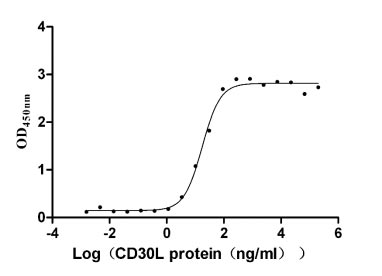
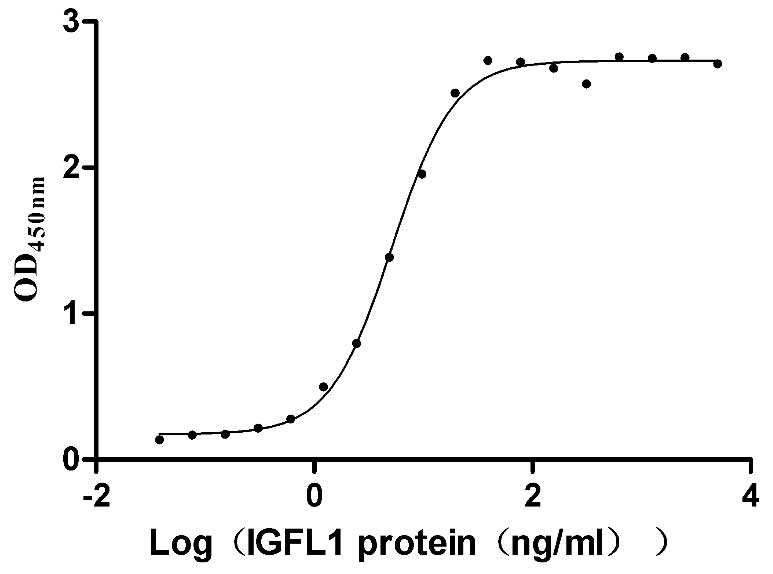
-AC1.jpg)
